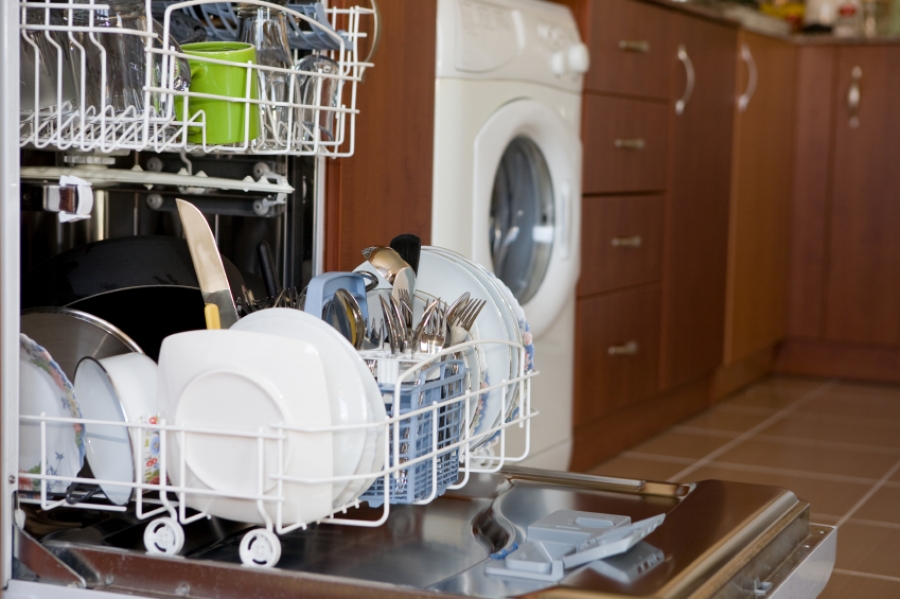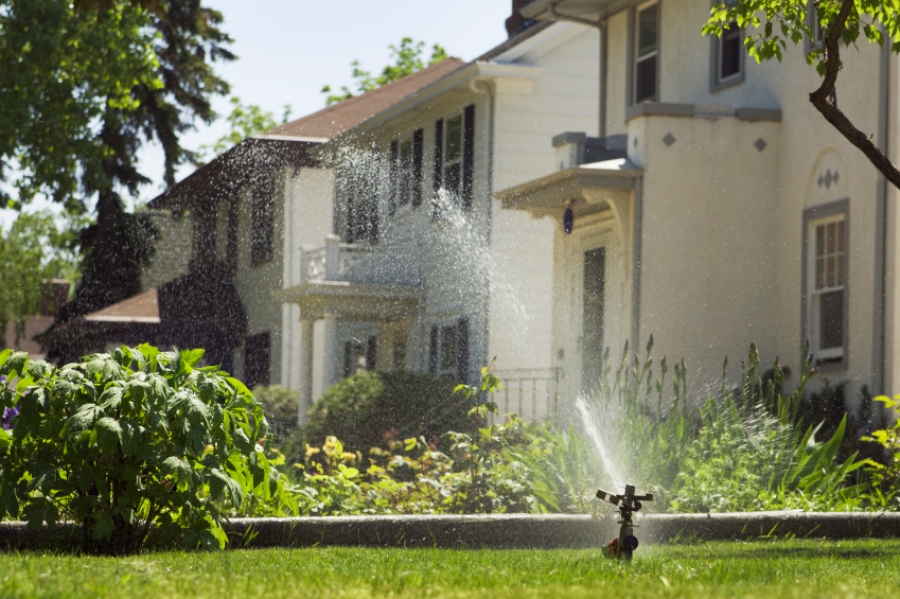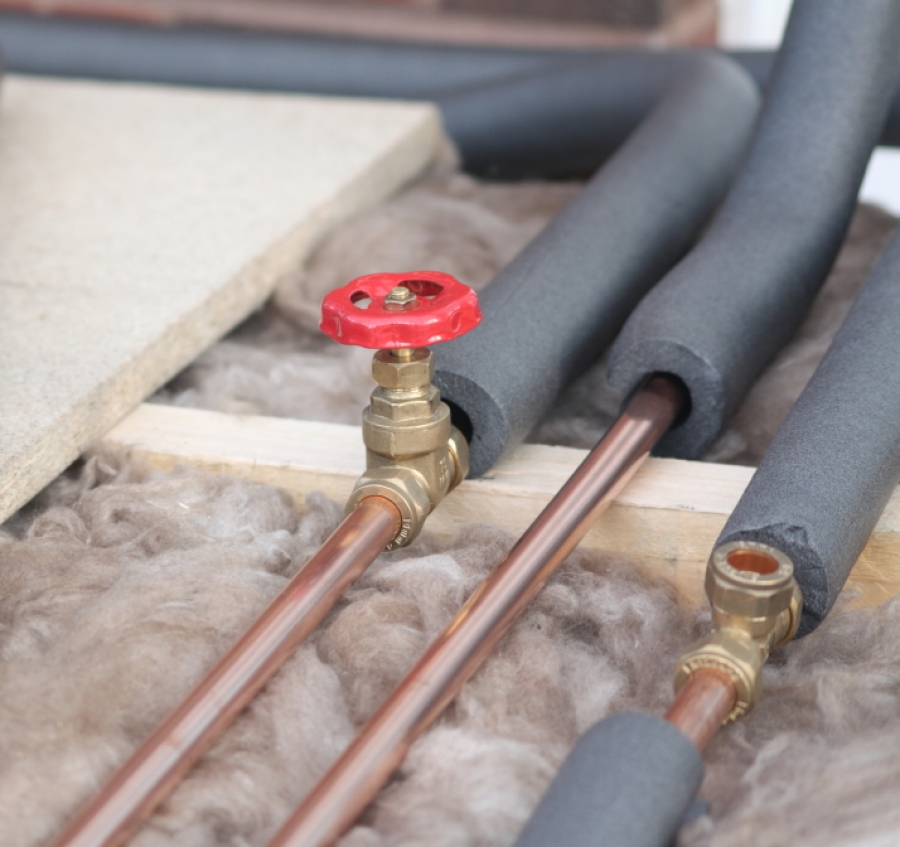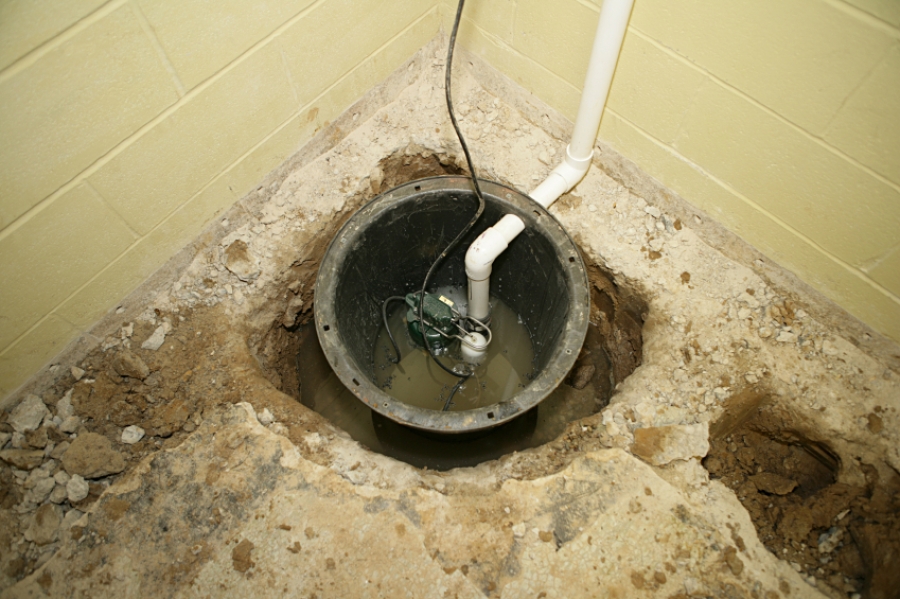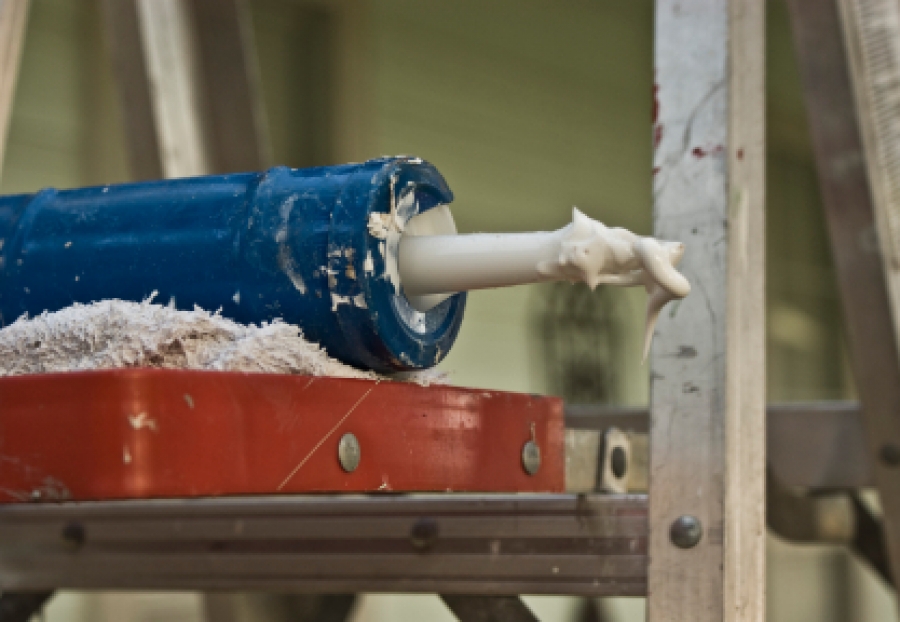Energy-Efficient Gas Water Heater Replacement Options
Video
Tankless hot water heaters are popular line items on most “green home improvements” lists. Does installing a tankless water heater pay off and, if so, how long does it take to see a return on your investment? That depends on your usage rate and other factors… check out the cost comparisons below.
Most of us take hot water for granted – but we really shouldn’t. According to the U.S. Department of Energy, heating water accounts for 14%–25% of the energy consumed in our homes. If you’re like most people, you have a conventional gas storage water heater that serves your household. When it fails, you’ll likely replace it immediately with another conventional gas storage water heater, because that is the least expensive option and it will quickly mitigate any potential for another cold shower. Iinstead of waiting until your heater breaks, you should plan (now, while the water is hot!) for your water heater’s replacement. We’ll provide basic information about some of your options by taking a look at two types of ENERGY STAR-qualified water heaters: high-efficiency gas storage and whole-home gas tankless. Then, when your water heater fails, you’ll be able to make an educated decision and purchase an energy-efficient replacement.
ENERGY STAR is a joint program between the U.S. Environmental Protection Agency (EPA) and the U.S. Department of Energy. The program offers a voluntary product label for energy-efficient products. Manufacturers who participate in the program have achieved the ENERGY STAR rating by meeting a defined set of criteria for a specific type of product. The goal of ENERGY STAR is to offer consumers a cost savings in their energy bills and reduce greenhouse gas emissions in our environment. A current list of eligible ENERGY STAR-labeled residential gas water heaters, both storage and tankless, can be referenced on the ENERGY STAR website or by clicking the links below. Eligible ENERGY STAR-labeled residential gas water heaters currently must meet the following criteria:
-
High-efficiency gas storage must have a nominal input of 75,000 BTU/hour or less and a rated storage volume from 20 to 100 gallons.
-
Energy Factor (EF) must be greater than or equal to 0.67.
-
First-Hour Rating (FHR) must be greater than or equal to 67 gallons per hour.
-
The warranty must be greater than or equal to 6 years on the sealed system.
-
Product must meet ANSI Z21.10.1.
-
-
Whole-home gas tankless must have a nominal input of 50,000 BTU/hour up to 200,000 BTU/hour and a rated storage volume of 2 gallons or less.
-
Energy Factor (EF) must be greater than or equal to 0.82.
-
Gallons per Minute (GPM) must be greater than or equal to 2.5 gallons over a 77 degree F rise.
-
The warranty must be greater than or equal to 10 years on the heat exchanger and 5 years on parts.
-
Meet ANSI Z21.10.3
-
Note: Energy Factor (EF) indicates the energy efficiency of a water heater; the higher the EF, the more efficient the water heater.
High-Efficiency Gas Storage Water Heater
The conventional gas storage water heater remains the most common type of water heater used in North American homes today. Cold water is stored in an insulated, glass-lined tank and heated by using a thermostat, burner, and flue. As water cools below a predetermined temperature, the thermostat activates the water heater; it opens the gas valve, initiates the pilot, and ignites the burner. When the water is warmed to a predetermined temperature, the thermostat closes the gas valve and the burner extinguishes. This process occurs continually throughout the day and night to ensure that hot water is available on demand within the home. High-efficiency gas storage water heaters operate the very same way; however, they have a power vent exhaust, more efficient burners, better insulation, and heat traps installed at the cold/hot water lines. Such additions and improvements increase the energy factor (EF) of gas storage water heaters and reduce the amount of energy used. When replacing an existing conventional gas storage water heater with a high-efficiency gas storage water heater, you will disconnect it from the utilities and remove the unit, then replace it with a new unit and connect it to the existing utilities. Water piping and gas piping and/or venting may require only slight, if any, modification.
Prior to purchasing a new water heater, you must take into consideration the needs of your household during the peak usage hour of the day. Do not assume your current water heater is properly sized for your household’s needs. In order to define your household need, you should first consider what hour of the day will account for the most water use. Then calculate the typical amount of water that is used during that hour. This amount will vary among households and will depend heavily on the fixture or appliance being used and the length of time each fixture is used. Fixtures and appliances have specific water flow rates (GPM) that can be referred to; these can be found in an owner’s manual or on a manufacturer's website. If you are unable to determine GPM, consult with an experienced plumber for assistance in defining your household’s hot water requirements.
Once you have collected usage data, perform this calculation: GPM x Minutes Used = Total Use/Hour, for each point of use during the peak hour. Add all of the totals to define a specific number of gallons. A term known as First Hour Rating (FHR) will be noted on the EnergyGuide label of a new water heater. FHR describes how much hot water, in gallons, a storage water heater can provide in an hour. A water heater’s FHR should correspond to the predetermined peak hour need of your household. A properly sized storage water heater will offer the greatest efficiency and provide enough hot water for your entire household, ensuring that you don’t run out of hot water during a shower.
Whole-Home Gas Tankless Water Heater
Tankless water heaters are popular in Europe and other countries around the world, although they were not introduced in the United States until 1979. Increasing utility costs and product improvements have resulted in increased consumer awareness, and whole-home gas tankless water heaters are gaining in popularity. Tankless water heaters take up very little space because they have no capacity to store water; instead, cold water is piped through a heat exchanger and heated to a preset temperature range. When there is a demand for hot water in your home, water flow initiates a sensor in the water heater. The gas valve opens, burners ignite, and the heat exchanger warms. Water is rapidly heated and piped to the open faucet or appliance. When the faucet is closed or an appliance cycle ends, water flow stops and the heating element shuts off. Tankless water heaters only heat water on an as-needed basis and will never run out of hot water during normal operation. They avoid standby heat loss and the continual use of energy to maintain a constant amount of hot water. In turn, the energy factor of whole-home gas tankless water heaters is generally higher than high-efficiency gas storage water heaters.
Replacing a conventional gas storage water heater with a whole-home gas tankless water heater may require electrical improvements as well as moving and/or increasing the size of water piping and gas piping and/or venting. This will depend entirely on what is currently available in your home and where you want to locate the tankless water heater. Prior to purchasing a whole-home gas tankless water heater, you should read the manufacturer’s installation manual and develop a complete understanding of the electrical, plumbing, and venting requirements for the unit. Any needed improvements or modifications to these systems will increase the cost of installation.
Prior to purchasing a whole-home tankless gas water heater, you need to define what flow rate is required for your household during peak usage and what temperature rise is needed. This will ensure you select a tankless water heater with an appropriate capacity to serve your household’s hot water needs. In order to accomplish this you need to first identify what fixtures and/or appliances may be used at the same time on any given day. Refer to an owner’s manual or a manufacturer’s website in order to obtain flow rates ( in gallons per minute, GPM) for these specific fixtures and appliances. Add up the flow rates for each of the fixture(s) and appliance(s) to determine your household’s hot water peak usage flow rate in gallons per minute (GPM). Once this is determined, develop an understanding of your cold water’s temperature. This will be based on ground temperature where you live and the time of year; 55 degrees to 60 degrees F is a good national average. In northern climates, however, ground temperatures can be as low as 40 degrees F in the winter. In southern climates, they can be as high as 70 degrees F in the summer. Should you have any concerns about your household’s hot water needs, consult with an experienced plumber for assistance in defining the requirements for your home.
Whole-home tankless gas water heaters have specific flow rates that are relative to the necessary temperature rise. Water is typically heated to 120 degrees F, so if you are heating, for example, 55° F cold water to 120° F, you have a 65° F temperature rise. If you are operating a shower at 2.5 GPM and a dishwasher at 2 GPM during peak usage, you home would require a whole-home tankless gas water heater that is rated for minimum of 4.5 GPM at a 65° F temperature rise. A higher flow rate could allow hot water usage at additional fixture(s); however a lower flow rate would be inadequate for the given scenario.
Life-Cycle Cost Analysis
Having developed an understanding of each type of water heater, determined the required size and capacity for each type, and learned the energy efficiency or energy factor (EF) of various models, we are armed with information that will allow us to make a decision. However, in order to make a truly educated decision, we need to understand how this purchase will affect our wallet, both now and over time. We can perform what is called a life-cycle cost analysis, which will define anticipated costs such as the cost of the water heater, installation, yearly cost of operation and an anticipated lifespan of the water heater. By combining these costs over a pre-determined period of time, we are able to understand and compare the total cost of ownership. In order to estimate yearly cost of operation, we need to know what our natural gas costs are per BTU or Therm. We also need to know what the energy factor (EF) rating is for the water heater we have selected. According to U.S. Department of Energy, we can use one of these two formulas to estimate the annual cost of operation.
365 X 41045/EF X Fuel Cost (Btu) = estimated annual cost of operation
OR
365 X 0.4105/EF X Fuel Cost (therm) = estimated annual cost of operation
So, let’s begin by taking the minimum energy factor (EF) as defined by the ENERGY STAR criteria and estimate conventional, high-efficiency and whole-home tankless gas water heaters. We will use a natural gas rate of $0.60/therm as our fuel cost.
Conventional Gas Storage Water Heater with an EF = 0.62
365 X 0.4105/0.62 X $0.60 = $145/Year
High-Efficiency Gas Storage Water Heater with an EF = 0.67
365 X 0.4105/0.67 X $0.60 = $134/Year
Whole-Home Tankless Gas Water Heater with an EF = 0.82
365 X 0.4105/0.82 X $0.60 = $110/Year
According to the American Council for an Energy-Efficient Economy (ACEEE), “Life expectancy for water heaters is highly variable, largely dependent on water hardness, and on maintenance. Currently, there is too little data to accurately estimate life expectancy for tankless water heaters, but preliminary data shows that tankless water heaters could last up to 20 years. For all water heaters, life expectancy will depend on local variables such as water chemistry and homeowner maintenance.” For the purpose of this example, we’ll assume both the tankless water heater and the storage water heater will each last 15 years. I obtained some price estimates for both types of ENERGY STAR labeled gas water heaters and a conventional storage gas water heater from local home improvement stores. A 50 gallon conventional gas storage water heater cost approximately $600, a high-efficiency gas storage water heater cost approximately $650.00 and a 9.4 GPM whole-home tankless gas water heater cost approximately $1200.00. According to CostHelper, the installation cost of a storage water heater may be as low as $200 and the installation cost for a tankless water heater may be as low as $1000.
In this example, the whole-home tankless gas water heater is roughly $1000 more than the high-efficiency gas storage water heater over a 15 year time period. The conventional gas storage water heater is roughly $100 more than the high-efficiency gas storage water heater over the same 15 year time period. It should be noted that, in this example, we generously gave the storage water heaters a 15 year lifetime. Typical anticipated lifetimes for these water heaters are 8-12 years for conventional and 10-15 years for high-efficiency. We were also rather lean with our 15 year estimated lifetime for the whole-home tankless gas water heater, which is suggested to last longer than 20 years and in fact carries a longer warranty then the gas storage water heaters. In addition, fuel costs, family size and usage will affect the yearly cost to operate. What this example shows us, though, is that the upfront costs of a whole-home tankless gas water heater is roughly 2 to 2.5 times more expensive than a high-efficiency gas storage water heater and a high-efficiency is less expensive to own than a conventional gas storage water heater.
Determining what is right for you and your household depends entirely on you, your interests and what your wallet dictates. If you’re planning to sell your home in the near future, and you fear your existing water heater may not last, I would consider the lower upfront cost of a conventional one, or at most upgrade (for the improved marketability) to the high-efficiency gas storage water heater, rather than incurring the additional expense of a whole-home tankless gas water heater. However, if you have a long term commitment to your current residence, a whole-home tankless gas water heater may be a viable option. It’s entirely conceivable that you could experience a cost savings by making the investment over a period of 20 or more years. At the very least, you could break even while reducing the number of times that you’ll need to replace your water heater.

Jeff Calcamuggio
Jeff is an Editor-at-Large for Buildipedia.com who writes and edits Featured At Home and Knowledgebase content. Prior to joining Buildipedia, Jeff's work experience included carpentry, construction documentation, specification writing, construction administration, project management, and real estate property inspection. Jeff is a member of the Construction Specifications Institute (CSI) and an educator at Columbus State Community College and enjoys challenging DIY home improvement projects.

